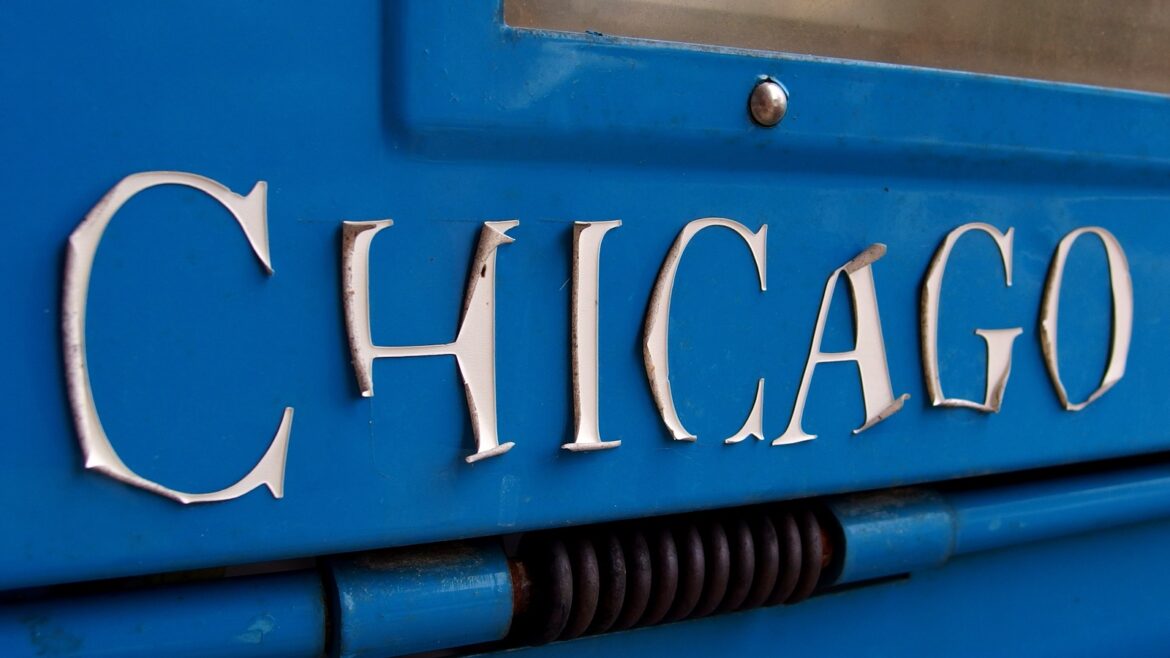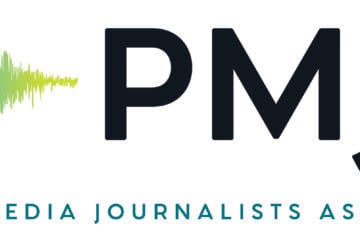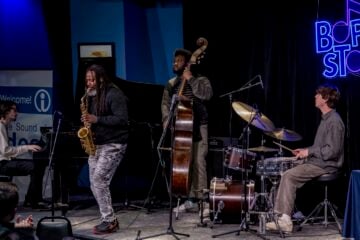What happened when the Chicago Sun-Times freed the news

Jeff Snyder / Flickr via Creative Commons
This article was first published by Nieman Lab and is republished here under a Creative Commons license.
On election night in 2022, veteran journalist Tracy Brown walked through the newsrooms of the Chicago Sun-Times and WBEZ public radio and saw a future for local journalism.
It was the first election after the melding of the Sun-Times and WBEZ, a move that likely created the largest nonprofit local news organization in America. Brown first watched live radio broadcasts in the studio at the Navy Pier newsrooms. Then, she recalls, she walked over to see Sun-Times page designers adding photos and headlines to the night’s election stories.
“And then in this other corner, we had people huddled over a screen” working on digital content and social media posts, says Brown, chief content officer of Chicago Public Media, which owns the two newsrooms. Audience and marketing staffers also pitched in.
“That one night … brought us all together in a way that I thought spoke to the possibilities of what our future could be,” says Brown.
It’s been two years since what a Northwestern University study called the “marriage” of the 76-year-old newspaper and the 80-year-old radio station — supported by a $61 million dowry from a dozen foundations and individual donors. Now deep into the five-year grant, the combined newsrooms reach 2.8 million readers and listeners, newsletter subscriptions total 760,500, and the Sun-Times’ pageviews increased 55% over the past year. Staff sizes also have grown — crucial to producing more content — as have staff compensation and diversity.
But management departures and rocky union negotiations have also marked the transition. And a membership drive last fall noted that membership revenue wasn’t covering the losses that occurred after the Sun-Times’ digital paywall was dropped.
For Sun-Times readers, the most significant change is free news. Only a registration email is requested to access content. Those registered users are encouraged to become members who donate regularly or sponsors who support particular efforts like newsletters or events.
“There’s still a lot of people we need to reach,” says Jennifer Kho, who was hired as the Sun-Times’ executive editor a few months after CPM acquired the newspaper. “But it is really great to know that money is not the primary reason’’ for not reading the Sun-Times, she says. “It feels like we’re much more able to reach our mission.”
A Sun-Times survey conducted in April 2023 showed that half of Sun-Times readers earn less than $75,000 a year — in the most expensive city in the Midwest.
While it’s tricky to measure the impact of free news, Chicago Public Media CEO Matt Moog points to readership data. “We’re up about 500,000 people a week that we’re reaching” over last year, says Moog, who predicts email newsletter subscriptions will increase to one million by June 2024.
He also noted that the newly combined audiences of the Sun-Times and WBEZ “are majority people of color, which for most public media organizations is not the case.”
Producing more content for these larger audiences requires more staffing, and both the Sun-Times and WBEZ are slowly growing their ranks, for now avoiding the current media bloodbath. Each newsroom added about eight to 10 employees between 2022 and 2023. The Sun-Times projects a staff of about 105 newsroom employees by June 2024.
And those employees are becoming more diverse, notes Kho, who is the first woman and the first person of color to lead the Sun-Times in its history. While the staff was made up of about 70% white employees in 2021, that percentage decreased to about 63% in the current diversity survey. Men still outnumber women in the newsroom: 64% currently, compared to 69% in 2021. Gender percentages are similar in the WBEZ’s content staff, and 48% of that staff is white.
“We’re still not fully representative of the community because the number of people we’ve been able to hire does not make up for the fact that the majority of our staff is not turning over,” says Kho. “But we have made some significant progress.”
Joining the two newsrooms also has resulted in operational efficiencies and collaborations, like covering elections and politics, says Kho.
“Previously we would have all been covering some of the same races and now we’re able to divide and conquer, get into the communities a little more,” Kho says, “as well as bringing together the expertise that we have from both newsrooms.”
Additional resources also lead to more coverage of topics that some newsrooms have nearly abandoned, Brown adds, like arts and culture. Kho has a long list of local projects she says wouldn’t have happened if the two newsrooms hadn’t merged under CPM, including:
- Extremism in the Ranks, a joint project that examined Chicago police ties to extremist organizations
- Chicago Street Race, which covered the sports, news, and entertainment angles of the NASCAR event
- An investigation into local gun violence and high-capacity machine guns
- The Chicago school closings project, a retrospective on 50 schools that were closed a decade ago.
Where’s the money?
While $61 million is a nice cushion and efficiencies are helpful, the newsrooms still must meet revenue goals to keep attracting foundation dollars. Readers of the Sun-Times print newspaper still must pay to read, but not surprisingly, home delivery subscriptions have fallen by about 6% each year, according to Moog.
New revenue comes from memberships, newsletter advertising, and events. A corporate newsletter sponsor gets a couple of mentions in each edition — no traditional display or banner ads — under a new effort that began after the acquisition. “That’s gone from zero to over a million dollars in revenue over a couple of years,” says Moog, who added that the newsletters have a daily open rate between 40% and 50%.
Moog says CPM’s community engagement team holds about 50 events a year, and admission fees are charged for about half of them. Then there are the familiar public media membership drives, bequests, giving circles, and even stock and property donations. CPM officials would not disclose current membership numbers, saying they had not yet been fully analyzed internally. However, they acknowledged the Sun-Times’ goal of gaining 3,000 new supporters during last fall’s fundraising drive wasn’t reached. Moog says the goal was “ambitious” but added that “we were encouraged by the support we did see” from new donors and current members.
“One lesson that everyone can take away from the WBEZ/Sun-Times merger is that you’ll need philanthropic funding to help the newspaper convert to a nonprofit model,” Alison Scholly, managing director at Public Media Company, a nonprofit consulting firm that worked on the Sun-Times acquisition, told Medill’s Local News Initiative.
While philanthropy is “very important” in this scenario, says Ken Herts, chief operating officer at the Lenfest Institute and a consultant on the Sun-Times acquisition, “over time, memberships are likely to dwarf other revenue sources. … Newsletters are unlikely to be a large paid revenue source, but they are great at building engagement and encouraging memberships.”
The Chicago survival model has clearly caught the interest of other news organizations struggling through journalism’s polycrises. Moog says he’s talked with at least 10 news organizations who want to know about the process. Tracy Brown also was part of a group that advised another newspaper–public radio partnership last year.
“What I’ve said to them is that the set of circumstances that we had in Chicago were a unique set of stars aligning,” says Moog. “We got tremendous support from foundations. We had a major American newspaper that was ready, willing, and able to go to a nonprofit status. We had a lot of synergy between Chicago Public Media and the Chicago Sun-Times.”
Moog doesn’t believe that the Chicago acquisition model is “a template that can just be stamped out on every city in America … but I think it certainly helped to feed the national conversation about how organizations in different cities could lean into thinking bigger and bolder about what is possible.”
And in the past year, news organizations have taken a chance on a new business model that builds digital revenue. It’s “a wave that is washing over different newspapers at different rates at different times,” says Herts. He points to the Denton Record-Chronicle’s acquisition by KERA public radio in Texas, and the Baltimore Banner–WYPR public radio joint operating agreement. There’s also WITF public radio’s partnership that includes four news publications, a television station, and a podcast in Pennsylvania.
But no one involved in these partnerships is likely to say they feel protected from the economic devastation churning through local journalism.
“No, no, I worry a lot,” says Moog. “About the declining market for advertising, about consumers’ willingness to become either members or subscribers. … We’re all facing headwinds where our normal sources of revenue are not growing. It’s a more urgent situation than ever, and we have to be creative and nimble and innovative.”
Cultures and departures
For news organizations considering a public partnership, Herts warns that “cultures and metabolisms” of newly conjoined media must be identified and managed.
“When this was all coming together, I worried a lot about culture,” says Brown, who’s worked in both newspapers and radio, “in terms of how you collaborate, and to some degree, competitiveness.”
A task force to examine how the newsrooms would collaborate was created early in the process, Brown says, consisting of reporters, managers and union members from WBEZ and the Sun-Times. “They looked at everything from workflows, how we collaborate in meetings, events and social things for us to learn from one another.”
Two people from WBEZ attend the Sun-Times’ daily news meeting and vice versa, says Kho. Slack channels, meetups and project planning meetings help work processes and avoid unintended double-coverage of news stories. Brown says she’s been impressed by reporters who “organically” began collaborating with each other instead of waiting for a formal process.
Still, labor negotiations have not been without rancor. Sun-Times union members in late 2022 complained about proposals to cut overtime pay and deny their right to hold “sympathy strikes” in support of other organizations’ future labor disputes — including WBEZ. The contract was finally ratified about six months later.
Nader Issa, an education reporter and co-chair of the Sun-Times Guild, said the Guild successfully negotiated some key improvements, including protections against future layoffs. “We felt that this was our time to secure some financial stability,” said Issa, noting the paper’s disastrous history with layoffs and bad management under some previous owners.
“We’re hopeful that this can be a really good next chapter in the organization’s future of trying to build something sustainable,” said Issa, but added that the guild is “keeping an eye on” revenue goals.
Last December, unions for both WBEZ and the Sun-Times reported “hostile work environment” allegations against an unnamed executive with Chicago Public Media, according to reporting by the Sun-Times.
Shortly afterward, CEO Matt Moog announced his resignation. Hours later, according to the Sun-Times’ reporting, the unions dropped their request for an investigation into the hostile work environment complaint.
Moog, who says he’s remaining in his position until a new CEO is found, would not comment on what he characterized as “the speculative reports that are out there.”
“The real reasons for my departure have to do more with my desire to pursue innovation and entrepreneurship,” Moog says. “And I’m very, very proud of what we’ve been able to build and I think the team has done great work.”
Part of that team also has departed.
Leaders who have moved on to other jobs or retired over the past year include: chief audience officer Celeste LeCompte and communications vice president Betsy Berger, who both left in December; Sun-Times CEO Nykia Wright, who left in early 2023; Mary Hoffman, a Sun-Times executive vice president who retired in December 2023; and Nick DePrey, CPM’s vice president of product, who left in March 2023.
Some of those positions won’t be filled. However, Gilbert Bailon, a former editor at the St. Louis Post-Dispatch and KERA public radio in Dallas, was hired in August as WBEZ’s executive editor.
The workforce tumult and economic uncertainty isn’t particularly surprising to anyone who’s been in journalism for a while. But millions of grant dollars, a growing audience, and a double-sized newsroom can provide some hope.
“It really just emphasizes how important it is to continue to provide factual local news and information, and what a privilege it is to be in this place,” says Kho, “but that is not guaranteed. We can’t just chill. We want to make this work and really make the most of this opportunity. We’re taking that seriously and talking about it every day.”
Jane Elizabeth, a media consultant, has been a manager and editor in several U.S. newsrooms including The (Raleigh) News & Observer, The Washington Post and the Pittsburgh Post-Gazette. She is the American Press Institute’s former director of accountability journalism and was a Knight Nieman Visiting fellow.





